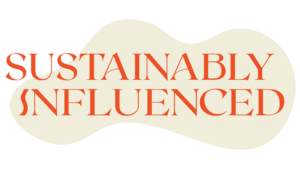How Sustainable Is Vegan Leather?
When learning about sustainability, we are often told that the vegan product is the sustainable one, but when it comes to leather, it may not be so simple. It is natural to want to look for an alternative to leather, considering what we know about the impact of animal agriculture on the environment. As vegan alternatives are beginning to gain more attention, unfortunately your vegan doc martens might not be any different than your vintage leather jacket when it comes to sustainability.
What is vegan leather actually made from? Most vegan leathers are made from PVC- a type of, yes you guessed it, plastic. It’s the most widely used plastic due to being much lower cost than other materials, and unfortunately is it also incredibly damaging when it comes to the environment. If PVC gets into the water course, it can contaminate water supply and harm aquatic life and the fumes when burning PVC also create air pollution.
The main issue with leather being made from plastic of course, is the fact that it can take up to 1,000 years to decompose, in comparison with normal leather that biodegrades within 25-50 years. This wouldn’t be so much of an issue if vegan leather was more durable, and lasted longer than genuine leather, but even this is not the case. Even if well looked after, vegan leather could only last up to five years compared to genuine leather which can famously last for decades. This means that even with the conscious decision to slow down fashion, buy less and wear for longer, your vegan leather clothes won’t last as long as it’s counterpart.
It’s not all bad though. Thankfully, the issue with plastic vegan leather has come to light in recent years, and now some innovators have been searching for a way to get the best of both worlds:
Tree bark/ Cork- What screams ‘this is eco-friendly’ than a tree? The best thing about using tree bark is that it doesn’t harm the tree or its growth (meaning they can remain where they are in the world but still give us the material we need to make fake leather!). The other great thing about tree bark leather is that it is lightweight too. Similarly to tree bark, cork is a natural material that doesn’t harm the cork oak tree in the process. The best thing about it though is the cork is water resistant, something your leather products aren’t.
Plants- More and more companies are looking into using plants and other items you might find on your grocery list to make leather alternatives. The options are endless from mushrooms to apples to pineapples. Being made entirely from plants makes them vegan but also biodegrades in comparison to plastic.
Recycled leather- Whilst the other alternatives are great, sometimes nothing beats the real thing. Fortunately, more companies are now making leather products using leather offcuts that otherwise would have gone to waste. This is a great way to still enjoy leather products, yet still aiming to be sustainable in the process.

Ultimately, we have to do what is best for us – it isn’t always easy to be 100% sustainable 100% of the time; whilst also being conscious of animal rights.
It is also essential to look after the leather products we already have in our wardrobe. Storing leather products away from water, correctly cleaning and polishing and getting leather products re-shaped are all ways to ensure that your leather clothes last as long as possible.
Share This Story
Related Posts

Sustainable Graduation Gifts They’ll Love
When it comes to finding the perfect gift for these eco-minded grads, you don’t look too far; here’s a guide to gifts that will not only celebrate their hard-earned achievements but also resonate with their passion for sustainability.

New PEFC Survey Reveals Consumer Unawareness of Forest-Derived Fibres in Fashion, Highlighting Need for Sustainable Practices
Discover the latest PEFC survey revealing that nearly half of consumers are unaware that their clothing contains forest-derived fibres.

The White Company Is Now B Corp Certified! Here Are My Top Homeware Picks
The White Company have now been recognised for their efforts in limiting their social and environmental impact and have been given the ultimate sustainability stamp of approval – a B Corp Certification.

7 Highlights from Global Fashion Summit
This year’s Global Fashion Summit in Copenhagen emphasises the need for a just transition and the role of influencers.
